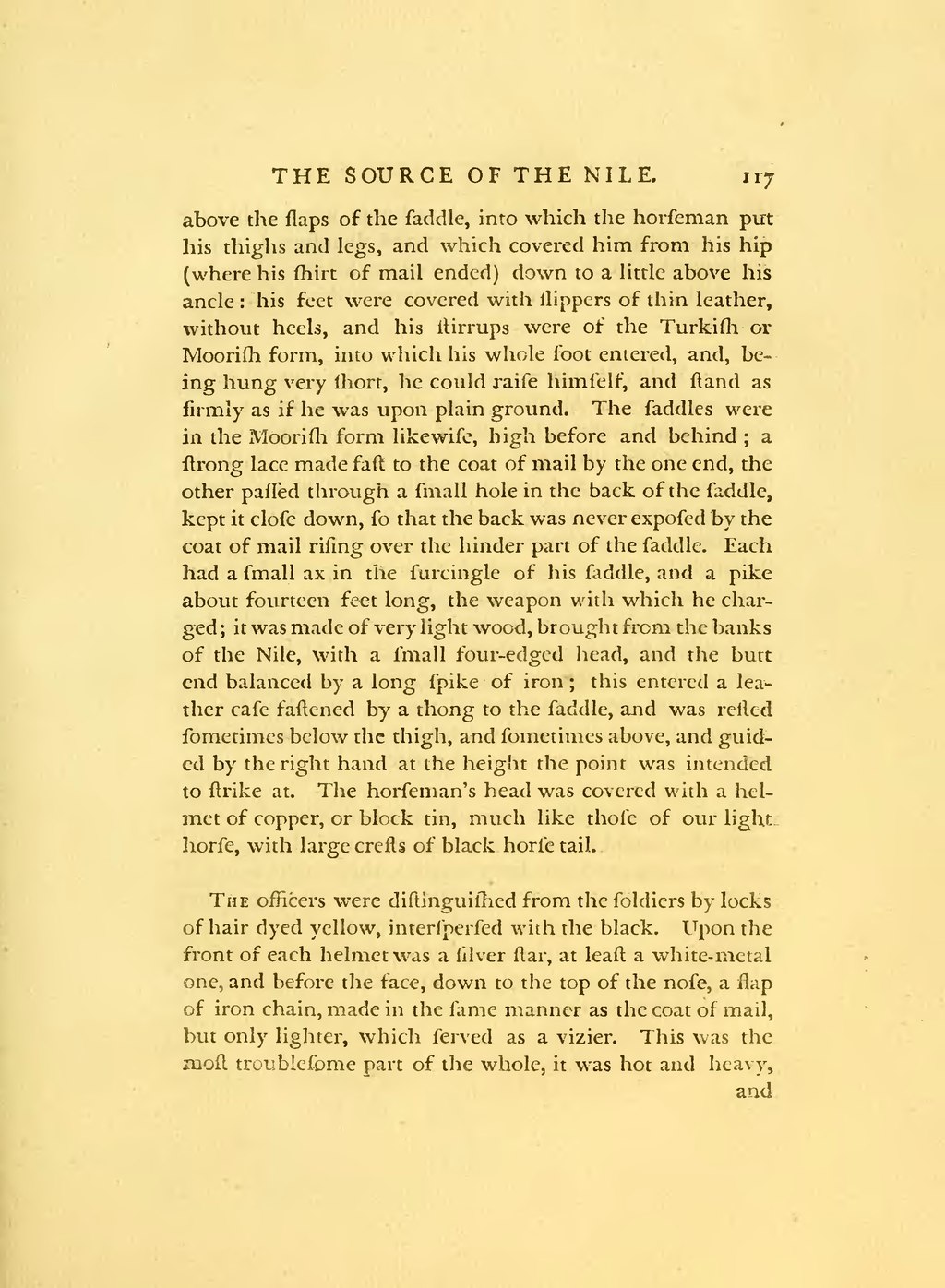above the flaps of the saddle, into which the horseman put his thighs and legs, and which covered him from his hip (where his shirt of mail ended) down to a little above his ancle: his feet were covered with flippers of thin leather, without heels, and his stirrups were of the Turkish or Moorish form, into which his whole foot entered, and, being hung very short, he could raise himself, and stand as firmly as if he was upon plain ground. The saddles were in the Moorish form like wise, high before and behind; a strong lace made fast to the coat of mail by the one end, the other passed through a small hole in the back of the saddle, kept it close down, so that the back was never exposed by the coat of mail rising over the hinder part of the saddle. Each had a small ax in the foreangle of his saddle, and a pike about fourteen feet long, the weapon with which he charged; it was made of very light wood, brought from the banks of the Nile, with a small four-edged head, and the butt end balanced by a long spike of iron; this entered a leather case fastened by a thong to the saddle, and was rested sometimes below the thigh, and sometimes above, and guided by the right hand at the height the point was intended to strike at. The horseman's head was covered with a helmet of copper, or block tin, much like those of our light-horse, with large crests of black horse tail.
The officers were distinguished from the soldiers by locks of hair dyed yellow, interspersed with the black. Upon the front of each helmet was a silver star, at least a white-metal one, and before the face, down to the top of the nose, a flap of iron chain, made in the fame manner as the coat of mail, but only lighter, which served as a vizier. This was the most troublesome part of the whole, it was hot and heavy,
